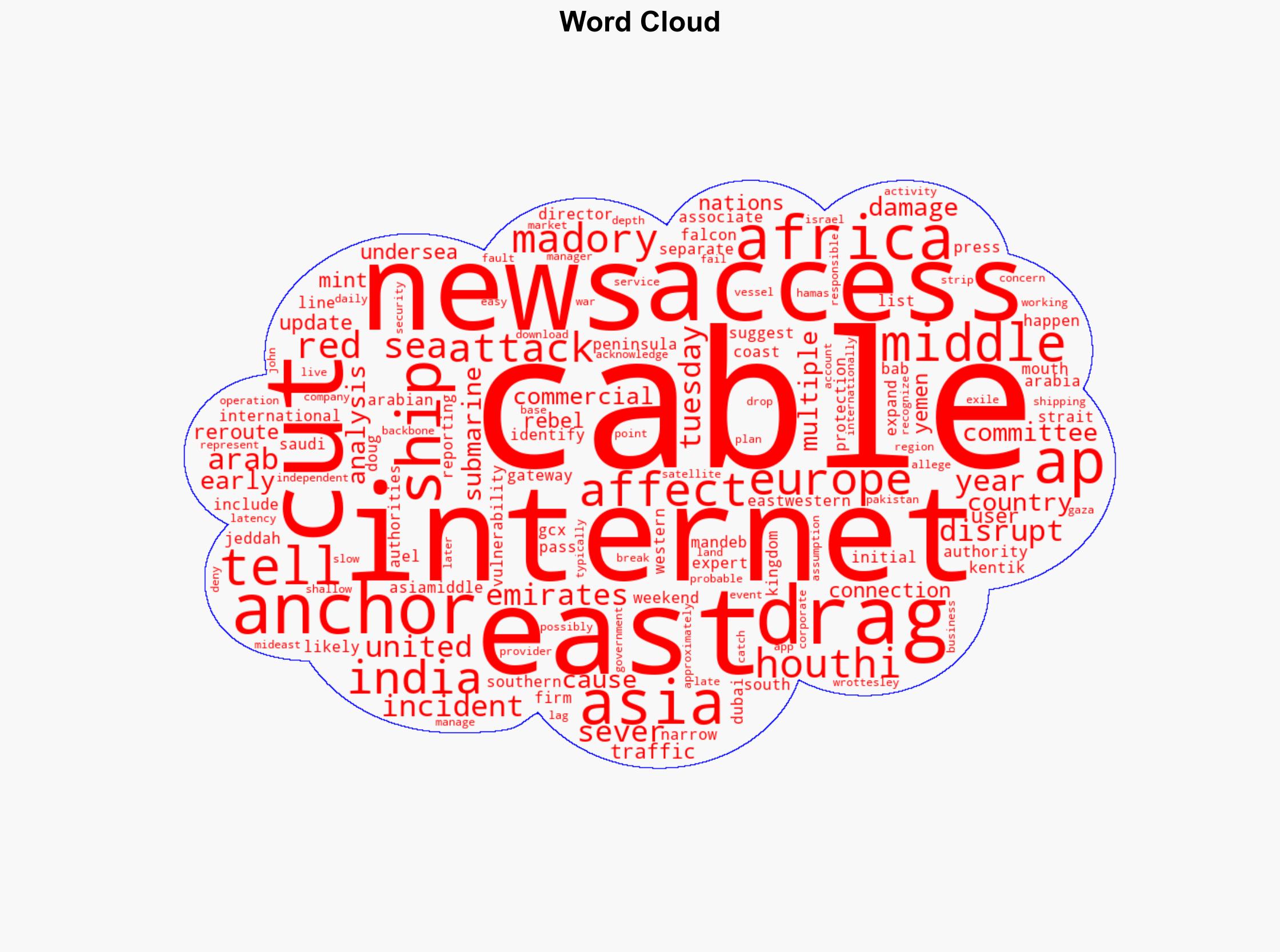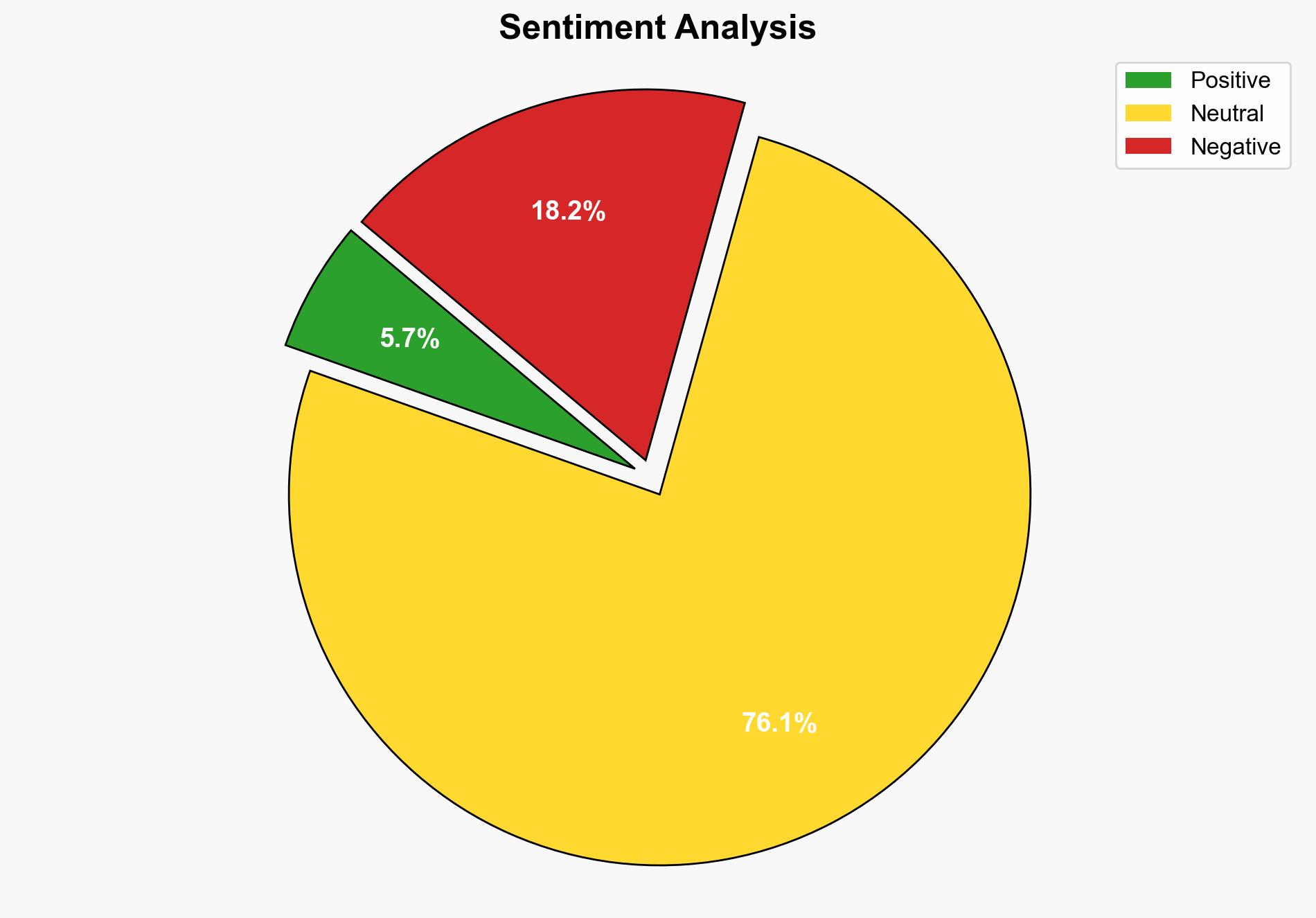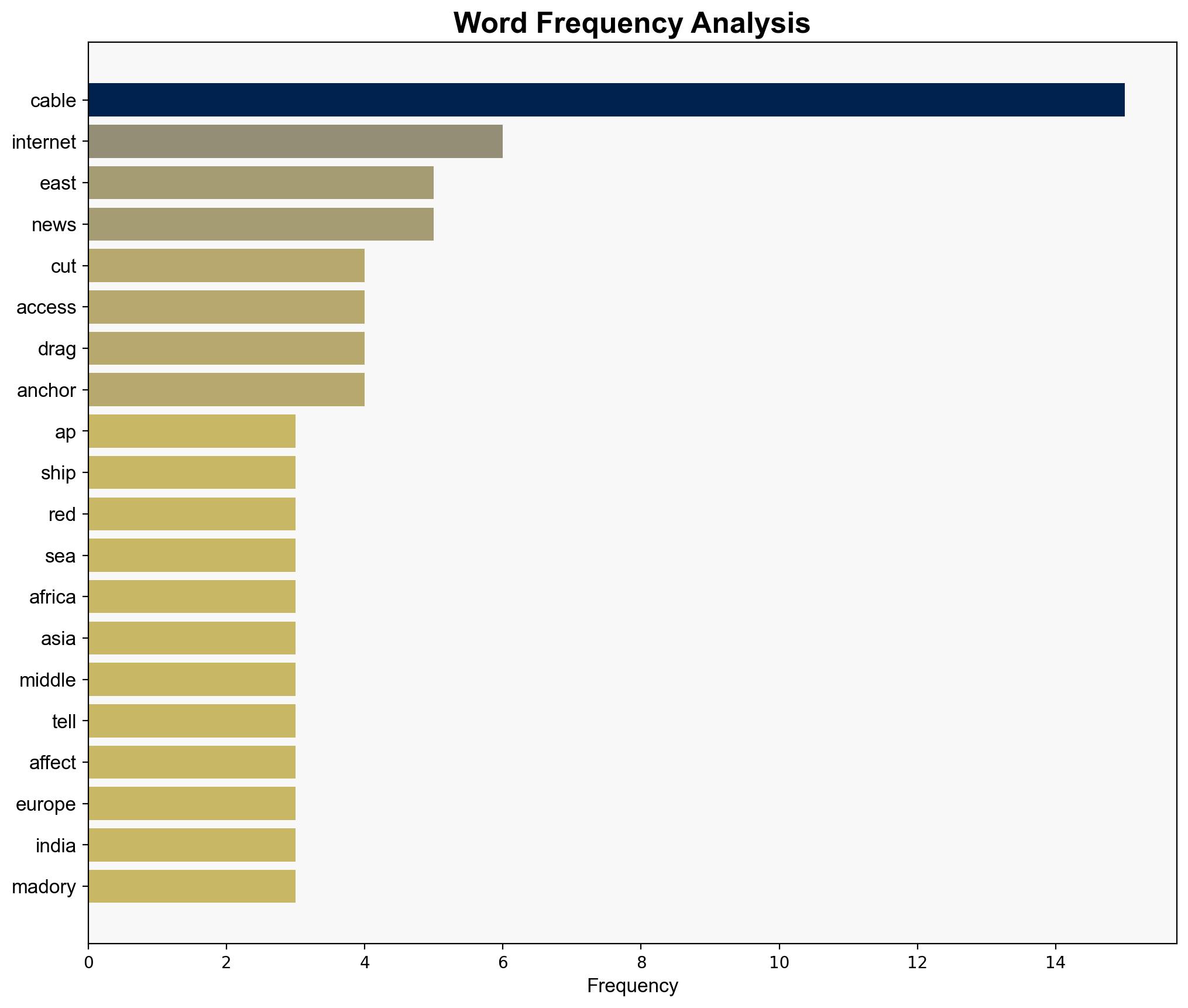Commercial shipping likely cut Red Sea cables that disrupted internet access experts say – Livemint
Published on: 2025-09-09
Intelligence Report: Commercial shipping likely cut Red Sea cables that disrupted internet access experts say – Livemint
1. BLUF (Bottom Line Up Front)
The most supported hypothesis is that commercial shipping activity, specifically anchor dragging, caused the damage to the undersea cables in the Red Sea. This conclusion is drawn with moderate confidence due to the historical prevalence of such incidents. It is recommended to enhance monitoring and protection measures for critical undersea cables to prevent future disruptions.
2. Competing Hypotheses
1. **Hypothesis A**: The cable damage was caused by commercial shipping activities, particularly anchor dragging. This is supported by historical data indicating that such incidents account for a significant number of cable faults annually.
2. **Hypothesis B**: The cable damage was a deliberate act, potentially by non-state actors such as the Houthi rebels, given the geopolitical tensions in the region and previous allegations of planned attacks on undersea cables.
Using the Analysis of Competing Hypotheses (ACH) 2.0, Hypothesis A is better supported due to the lack of direct evidence linking non-state actors to this specific incident and the commonality of accidental damage by ships.
3. Key Assumptions and Red Flags
– **Assumptions**:
– Hypothesis A assumes that the historical trend of anchor dragging incidents continues to be the primary cause of cable damage.
– Hypothesis B assumes a high level of capability and intent from non-state actors to target undersea cables.
– **Red Flags**:
– The absence of concrete evidence directly linking any group to deliberate sabotage.
– Potential cognitive bias towards attributing incidents to known threats without sufficient evidence.
– **Blind Spots**:
– Limited visibility into the exact movements of ships in the region at the time of the incident.
– Potential underestimation of non-state actors’ capabilities.
4. Implications and Strategic Risks
The disruption of undersea cables has significant implications for internet connectivity and economic stability across affected regions. The risk of repeated incidents could escalate tensions among nations reliant on these cables for communication. Additionally, if non-state actors are involved, this could signal a new front in asymmetric warfare, targeting critical infrastructure to cause widespread disruption.
5. Recommendations and Outlook
- Enhance surveillance and monitoring of maritime activities in critical areas such as the Bab el-Mandeb Strait.
- Invest in redundant communication pathways to mitigate the impact of future disruptions.
- Engage in international cooperation to secure undersea cables and share intelligence on potential threats.
- Scenario Projections:
- **Best Case**: Strengthened security measures prevent future incidents, maintaining stable internet connectivity.
- **Worst Case**: Continued disruptions lead to significant economic and geopolitical instability.
- **Most Likely**: Incremental improvements in cable security reduce the frequency of such incidents.
6. Key Individuals and Entities
– Doug Madory, Director of Internet Analysis at Kentik
– John Wrottesley, Committee Operation Manager, International Cable Protection Committee
7. Thematic Tags
national security threats, cybersecurity, counter-terrorism, regional focus





